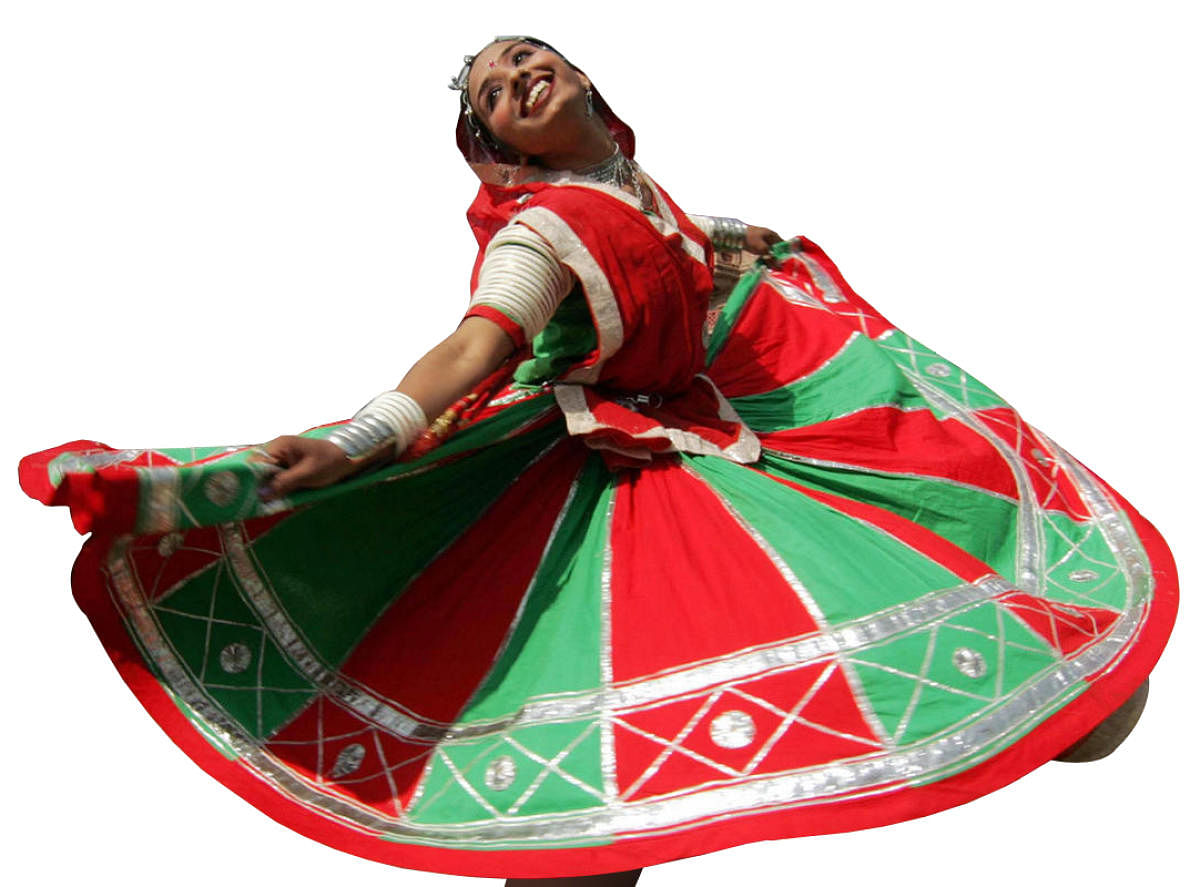
When folk musical forms find representation in films, they are sometimes turned into extravaganzas. Ghoomar, Rajasthan's song-and-dance form, was part of a recent Hindi film, Padmaavat. In it, one can see the queen twirling in resplendent traditional Indian attire in the song 'Ghoomar'.
The queen is seen celebrating her joy with her women companions and declaring her love for her husband while she pirouettes.
Although this song-and-dance routine comes off as predominantly ghoomar-based, there are traces of Chari, Bhavai and even Kalbelia in it, which are other Rajasthani folk dances.
Most folk dance forms from Rajasthan are known for their grace and are a conspicuous reflection of deep-rootedness to one's culture; ghoomar also finds a significant place in this cauldron of enchanting song-and-dance varieties. Ghoomar suggests its tie-up with the word 'ghoomna', meaning to go round and round.
Ghoomar is performed as a means of worship on festive occasions, and also during marriages.
This style was once unique to the Bhil tribe and later on, adopted by princesses and queens.
It is said that the Kachwaha clan of Amer had an ongoing enmity with Bhils earlier, but when their differences were sorted out, a cultural exchange took place between them, and the Rajputs and royals adopted ghoomar as their own. The typical lyrics of a ghoomar folk song also symbolise womanhood; in some parts of the song, a young girl tells her mother that she would like to marry a Rathore boy for she has grown up now.
As time progressed, ghoomar evolved, and perhaps even inculcated elements from the garba of Gujarat, and was practised in places like Udaipur, Jodhpur, Kota, and Bundi.
Women wear ghagra-choli (a team of ankle-length flared skirt, a blouse, and a veil - the chunari or odhni.) These are bordered with gota or lace, embellished with zari (silver-thread embroidery) and enhanced with mirror work. Earlier, cotton was popular, but silk and chiffons are also used now. Intricate ornamentation and fabrics may, however, even allude to class.
The amalgamation of song and dance, along with the colour of clothing (such as feisty reds, torrid oranges, kaleidoscopic pinks, bursting rust-browns, forest greens and vivacious yellows), and countrified jewellery for beautification - head adornments such as borla and matha patti; baaju bandh or armlets; kadas or bangles; payals or anklets; jhumkas or earrings - invigorate the women swirling around in sweeping skirts.
Often, women and men perform ghoomar as an ensemble. However, men sing in the background and women dance. Dhol, drums, thali, metal plates, manjira, clash cymbals, and a harmonium are some of the instruments used as accompaniments.
This dance form takes years to perfect, and skilled ghoomar artistes may not always be convinced by the purity of any film's version. It may be because one cannot disagree that even though the ghoomar song from the film Padmaavat is a refined and glamourised adaptation, and enrapturing to watch and listen to, it is the everlasting glory of the original ghoomar of the Bhils and the Rajputs that shines through in the song, and lends it the haunting quality it possesses.
Behind the smiles and circular rotations, ghoomar is an embodiment of stories of the bond women share, of their trials and tribulations, and heritage and customs. It brings them happiness in togetherness and gives them moments of joy in their quotidian lives in the deserts of Rajasthan.